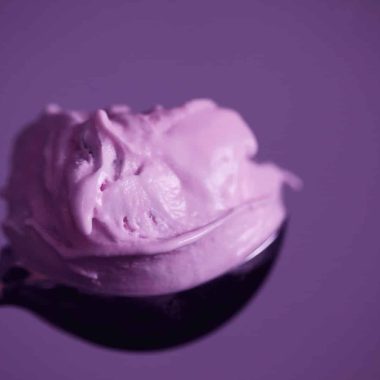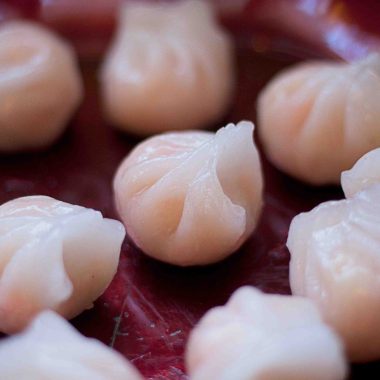Are you trying to reduce sugar but still satisfy your sweet tooth? Artificial sweeteners may seem like a good alternative, but since you have no idea about them, knowing which one to choose can be confusing.
Here, we will explore the different types of artificial sweeteners and how they compare to sugar.
Understanding the differences between these sweeteners allows you to make more informed choices about which ones to include in your diet.
1. Aspartame
Aspartame, a widely-used artificial sweetener, comprises two amino acids, phenylalanine and aspartic acid. It stands out for its popularity and is a common ingredient in diet sodas, sugar-free gum, and various low-calorie or sugar-free products. Approximately 200 times sweeter than sucrose, aspartame offers sweetness without the caloric content of natural sugars.
Despite its widespread use, aspartame does have limitations. For instance, it’s unsuitable for cooking or baking because it breaks down when exposed to high heat. This characteristic restricts its application to primarily non-heat processes, such as cold beverages and some desserts.
Aspartame’s safety has been the subject of extensive scientific scrutiny. This scrutiny comes with regulatory agencies such as the FDA and EFSA (European Food Safety Authority) confirming its safety for consumption within recommended limits. However, some individuals may experience adverse reactions to aspartame.
This is especially true for those with phenylketonuria (PKU), a rare genetic disorder that inhibits the breakdown of phenylalanine.
Despite its controversies, aspartame remains a prevalent choice for those seeking to reduce sugar intake while maintaining sweetness in their diet. Its versatility and intense sweetness continue to make it a key player in the market for low-calorie and sugar-free products.
2. Sucralose
Among the different types of artificial sweeteners, Sucralose is derived from sucrose (sugar) through a chemical process that substitutes three hydrogen-oxygen groups with chlorine atoms. This modification results in a compound approximately 600 times sweeter than sucrose. Due to its intense sweetness, people widely use sucralose in various food and beverage products, including diet sodas, baked goods, and sweet snacks.
One of sucralose’s critical advantages is its heat stability, making it suitable for cooking and baking applications. Unlike other artificial sweeteners that degrade when exposed to high temperatures, sucralose retains its sweetness and does not break down during cooking. This characteristic has made it particularly popular in recipes requiring sweetening without added calories.
Sucralose is also known for its clean, sugar-like taste, with minimal to no aftertaste, which enhances its appeal as a sugar substitute. Its versatility and ability to provide sweetness without the calories of sugar have contributed to its widespread use in the food industry. This caters to consumers’ preferences for reduced-calorie or sugar-free options.
3. Saccharin
Saccharin, the pioneering artificial sweetener, holds a significant place in the history of sugar substitutes. Discovered in 1879, it was the first non-nutritive sweetener, offering sweetness without the caloric load of sugar. Saccharin gained widespread popularity during times of sugar shortages, such as World War I and World War II, when it was used as a sugar alternative.
Its sweetening power, 300 to 400 times sweeter than sucrose, made it a favorite choice for individuals aiming to reduce their sugar intake.
Despite its utility, saccharin has faced controversies over the years, particularly regarding its safety. In the 1970s, studies linked saccharin consumption in rats to bladder cancer. This led to warning labels on saccharin-containing products.
However, subsequent research found that the mechanisms of bladder cancer in rats were not relevant to humans. In 2000, saccharin was removed from the U.S. National Toxicology Program’s list of potential carcinogens, as studies demonstrated its safety for human consumption.
Today, saccharin remains a commonly used artificial sweetener found in tabletop sweeteners, diet foods, and beverages. Its slightly bitter aftertaste may be off-putting to some. However, advancements in formulation have mitigated this characteristic in many products.
Saccharin continues to provide sweetness to consumers with a wide array of low-calorie and sugar-free options.
4. Acesulfame Potassium (Ace-K)
Acesulfame Potassium (Ace-K) is also among the different types of artificial sweeteners. It’s a calorie-free artificial sweetener commonly used in food and beverage products as a sugar substitute. It is approximately 200 times sweeter than sucrose, making it highly effective in small quantities.
Ace-K is produced by combining acetoacetic acid with potassium, resulting in a crystalline powder with a sweet taste.
One of the critical advantages of Ace-K is its heat stability, which allows it to retain its sweetness even when exposed to high temperatures. This makes it suitable for cooking and baking applications, where other sweeteners like aspartame may degrade.
Besides its heat stability, Ace-K often works with other sweeteners to enhance the sweetness and mask potential aftertaste. Its synergistic effect with other sweeteners reduces overall sweetener usage while maintaining the desired level of sweetness in the final product.
You can find Ace-K in a wide range of products, including soft drinks, desserts, candies, chewing gum, and tabletop sweeteners. Its versatility and intense sweetness make it popular for manufacturers looking to create low-calorie or sugar-free alternatives to traditional sugary foods and beverages. However, like other artificial sweeteners, you must consume Ace-K in moderation.
You must also be mindful of any potential health concerns associated with its use.
5. Neotame
Neotame is a high-intensity artificial sweetener derived from aspartame. People characterize it by its remarkable sweetness potency, approximately 7,000 to 13,000 times sweeter than sucrose (table sugar). It belongs to the same family as aspartame but is modified to enhance its stability and potency.
Neotame offers the advantage of being heat-stable. Thus, it’s suitable for cooking and baking applications where other sweeteners might degrade under high temperatures.
People often use this sweetener in various food and beverage products, including soft drinks, desserts, confectionery items, and chewing gum. Its extraordinary sweetness allows minimal amounts to achieve desired sweetness levels. This helps reduce calorie intake in various low-calorie or sugar-free products.
Despite its potency, neotame is virtually calorie-free and does not raise blood sugar levels. Thus, individuals with diabetes or those watching their calorie intake can take it. However, like other artificial sweeteners, it’s essential to consume neotame in moderation and be aware of any potential health concerns associated with its use.
Although it has undergone rigorous safety testing and has been approved for use in many countries worldwide.
6. Advantame
Advantame, a relatively recent addition to the artificial sweetener family, is gaining attention for its remarkable sweetness and versatility. Derived from a combination of aspartame and vanillin, Advantame boasts an astonishing sweetness level. It is approximately 20,000 times greater than sucrose, the standard table sugar.
This exceptional potency means only tiny amounts are needed to achieve the desired sweetness in food and beverages.
Unlike other sweeteners that may lose their sweetness or break down when exposed to heat, Advantame maintains its intense sweetness even under cooking conditions. This attribute has led to its incorporation into a wide range of products, including baked goods, confectionery, dairy products, and processed foods.
Moreover, Advantame’s stability extends its shelf life, allowing food manufacturers to create products with longer storage durations without compromising taste or quality. Advantame is essential in meeting the demand for low-calorie and sugar-free food options with its potent sweetness, heat resistance, and versatility.
It also satisfies consumers’ cravings for sweetness without the guilt.
7. Steviol Glycosides (Stevia)
Steviol glycosides are the last on our list of different artificial sweeteners. They are naturally occurring compounds found in the leaves of the Stevia rebaudiana plant, which is native to South America. Unlike other artificial sweeteners, stevia is derived from a plant source, making it a popular choice for those seeking natural alternatives to sugar.
People price Stevia extract for its intense sweetness, which can be 200-300 times sweeter than sucrose while containing minimal calories.
Stevia has gained popularity as a sugar substitute in recent years, with its use expanding beyond health food stores to mainstream food and beverage products. It is often powdered or liquid and can be found in various products, including soft drinks, flavored water, yogurt, and baked goods.
One of the critical benefits of stevia is its low glycemic index. It does not cause spikes in blood sugar levels, making it suitable for individuals with diabetes or those following a low-carbohydrate diet. Also, stevia is non-caloric and does not contribute to tooth decay, making it a preferred sweetener for oral health.
However, some people may experience a slight aftertaste when consuming stevia, which can vary depending on the product and concentration.









